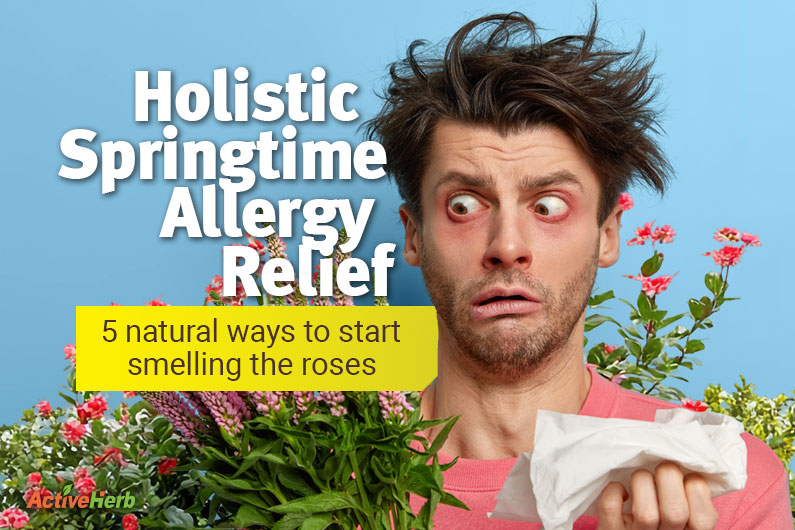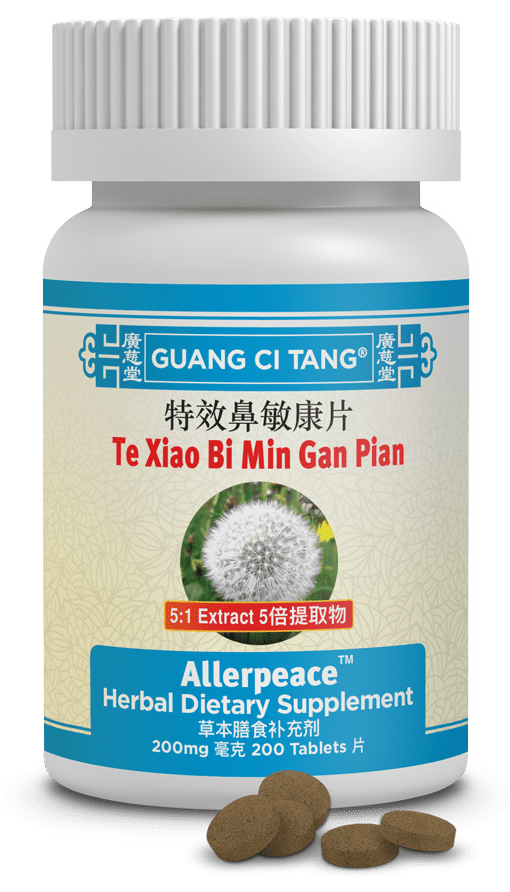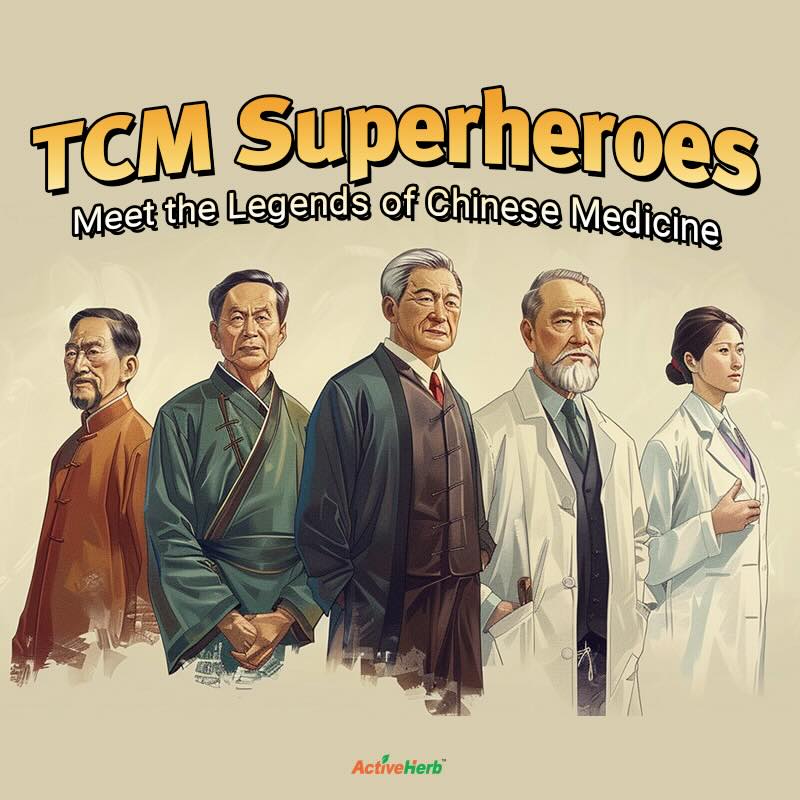Holistic Springtime Allergy Relief: 5 Natural Ways to Start Smelling the Roses

For many residents of San Diego, home of ActiveHerb.com HQ, spring is the peak season for enjoying the outdoors. The wildflowers are popping, the hills are verdant. Cue “The Sound of Music” soundtrack. But if you suffer from seasonal allergies, stepping out to smell the roses can feel more like walking into a pollen-powered ambush. Luckily, these 5 holistic tips for spring allergy relief may help you reclaim the season—naturally.
Tip #1: Start Early with TCM Allergy Formulas
While ActiveHerb.com is your go-to for TCM solutions for allergy symptom support, the key to conquering allergy season lies in preparation. In Traditional Chinese Medicine, allergies are seen as an invasion of Wind evils—specifically Wind-Heat or Wind-Cold—entering the body due to a weakened Wei Qi (defensive energy).
That’s why it’s ideal to start taking Allerpeace™ (Te Xiao Bi Min Gan Pian, formerly Nasal AllergiClear™) several weeks before peak pollen season hits. This formula helps expel Wind and clear the nasal passages while strengthening Wei Qi to prevent future attacks. Missed the prep window? No worries! Following the rest of these tips can still help you enjoy the outdoors without a box of tissues in hand.
Tip #2: Go Local with Bee Pollen
As mentioned in a research study in the journal, Nutrients, the medicinal properties of bee pollen—a combination of plant pollen and honeybee secretions and nectar—are documented in The Bible and ancient Egyptian texts. The theory with bee pollen is: By exposing your immune system to trace amounts of local pollen, you may reduce its overreaction to the real thing. This practice mirrors the TCM idea of gradually tonifying the body’s defense against outside evils. Bonus: In TCM, honey—also a bee byproduct—is used to moisten the Lungs and soothe dryness. To try it: take 1 teaspoon of locally-produced bee pollen daily (available at most farmers markets).
If you’re looking for scientific proof, the Nutrients study suggests that bee pollen has immunoprotective effects. In animals, dietary bee pollen increased key immune markers like IgM and boosted the size of immune organs such as the thymus. It also protected against the harmful effects of aflatoxins by increasing lymphocyte proliferation and improving antioxidant defenses, likely due to its rich content of vitamins, minerals, amino acids, polysaccharides, and flavonoids. In addition, bee pollen demonstrated anti-allergy effects by inhibiting mast cell activation, reducing inflammatory responses, and lowering IgE levels in animal models.
However, people allergic to certain weeds like ragweed, chrysanthemum, or dandelion may have a dangerous cross-reactive response to bee pollen—including the risk of anaphylactic shock. Anyone with pollen allergies should speak with a healthcare provider before trying bee pollen.
Tip #3: Rinse the Evils Away
Your sinuses are your first line of defense—and also your first victim. Nasal irrigation is like brushing your teeth, but for your sinuses. Using a Neti rinse bottle, mix distilled warm water with a saline packet and squeeze gently into each nostril. Unlike a Neti pot that uses gravity, a rinse bottle gives you more control over the flush.
(Fun fact: “Neti” is the Ayurvedic—Ayurveda: the traditional medicine heritage of India—term for “nasal rinsing.”)
While there’s no historical TCM equivalent of nasal irrigation (at least not to the same extent of Ayurveda), the idea aligns with expelling external pathogens—Wind, Damp, and Heat—from the upper body.
Tip #4: Sip a Special Tea for Dry Eyes
If spring allergies leave your eyes feeling like sandpaper, sip Chun-Yu-Ching-Hua-Yin tea. This traditional formula includes herbs like Ju Hua (chrysanthemum flower) and Sheng Di Huang (rehmannia root) to nourish Yin and moisten dryness.
A phase II pilot study even found this tea alleviated dry eye symptoms in patients with Sjogren’s syndrome. Not into bitter teas? Try adding goji berries or honey to make it more palatable and even more nourishing.
You can search for Chun-Yu-Ching-Hua-Yin tea online or purchase your favorite seasonal-allergy-fighting herbal extract granules for instant tea directly from ActiveHerb.com.
Tip #5: Take Allerpeace™ 3X/Day
Let’s circle back to Allerpeace™, because this one’s the heavy hitter for Wind invasion. The formula’s stars include Cang Er Zi (Xanthium fruit), which clears nasal congestion, and Xin Yi Hua (Magnolia flower), which helps open the sinuses. According to the Doctrine of Signatures, Cang Er Zi’s spiky fruit mirrors pollen’s “invasive” nature, and its ability to counteract it. Together with Bai Zhi (Angelica root) to relieve head discomfort and sneezing, and Huang Qin (Scutellaria) to clear Heat, this formula supports your whole upper respiratory system the way TCM has done for centuries. Take 2-3x per day during allergy season—or earlier to keep symptoms at bay.
Holistic Springtime Allergy Relief Tips: Conclusion
Spring should be a time of renewal and joy—not an indoor sentence with tissues and eye drops. From proactive TCM support to daily rituals like nasal rinsing and herbal teas, you now have five natural tools to help you breathe easy. So go ahead—step outside, smell the roses, and enjoy the beauty of the season.
References:
Dashtdar M, Dashtdar MR, Dashtdar B, Kardi K, Shirazi MK. The Concept of Wind in Traditional Chinese Medicine. J Pharmacopuncture. 2016 Dec;19(4):293-302.
Khalifa SAM, Elashal MH, Yosri N, Du M, Musharraf SG, Nahar L, Sarker SD, Guo Z, Cao W, Zou X, Abd El-Wahed AA, Xiao J, Omar HA, Hegazy MF, El-Seedi HR. Bee Pollen: Current Status and Therapeutic Potential. Nutrients. 2021 May 31;13(6):1876.
Wang, Y., Li, X., Zhang, J., Zhao, Y., & Liu, H. (2022). The immunomodulatory effects of bee pollen: A review. International Journal of Rheumatic Diseases, 25(2), 123–130.
Yen, C.-M., Lin, H.-C., Chen, W.-S., & Chang, C.-M. (2024). Evaluation of traditional Chinese medicine tea bag TBDESJS in patients with Sjögren’s syndrome and dry eye syndrome: A phase II pilot study. International Journal of Rheumatic Diseases, 27(10), 1234–1242.







